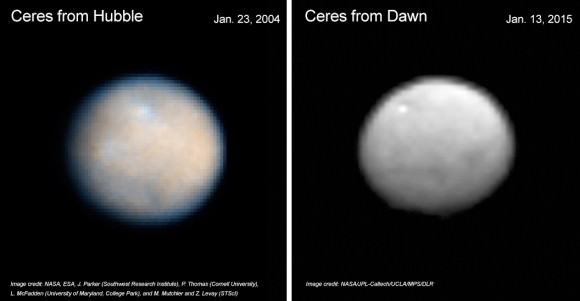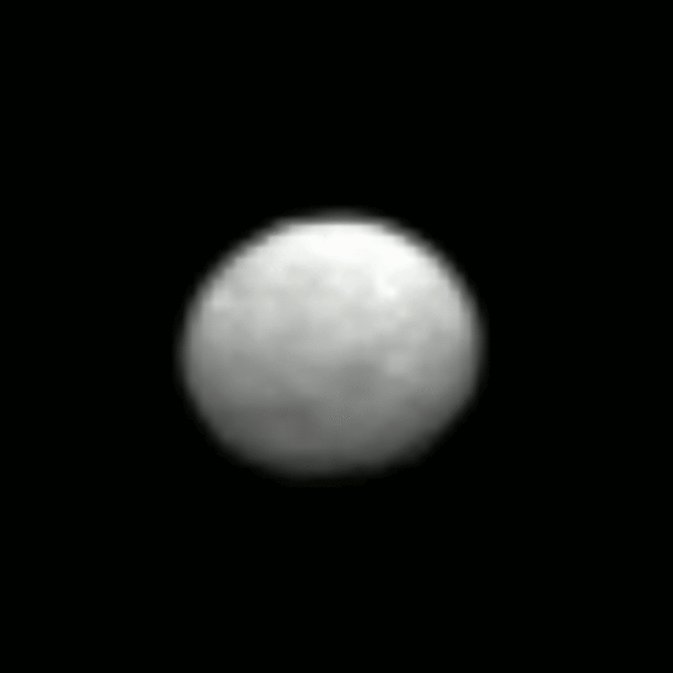Just sit back and watch the world turn… or should I say, watch the dwarf planet turn in this fascinating animation from Dawn as the spacecraft continues on its ion-powered approach to Ceres!
The images were captured by Dawn’s framing camera over the course on an hour on Jan. 13 at a distance of 238,000 miles (383,000 km) from Ceres. At 590 miles (950 km) wide Ceres is the largest object in the main asteroid belt.
“Already, the [latest] images hint at first surface structures such as craters,” said Andreas Nathues, lead investigator for the framing camera team at the Max Planck Institute for Solar System Research in Gottingen, Germany. “We have identified all of the features seen by Hubble on the side of Ceres we have observed, and there are also suggestions of remarkable structures awaiting us as we move even closer.”
Although these latest 27-pixel images from Dawn aren’t quite yet better than Hubble’s images from Jan. 2004, very soon they will be.

“The team is very excited to examine the surface of Ceres in never-before-seen detail,” said Chris Russell, principal investigator for the Dawn mission, based at the University of California, Los Angeles. “We look forward to the surprises this mysterious world may bring.”
Launched Sept. 27, 2007, Dawn previously spent over 13 months in orbit around the asteroid/protoplanet Vesta from 2011–12 and is now on final approach to Ceres. On March 6 Dawn will arrive at Ceres, becoming the first spacecraft to enter orbit around two different target worlds.
Read more: Find Out How “Crazy Engineering” is Getting Dawn to Ceres
Learn more at JPL’s Dawn mission site here, and find out where Dawn is right now here.
Also, read more from the Max Planck Institute for Solar System Research here.
Source: NASA/MPI


Wow. What’s the white spot? It’s in the color image too…(hoping for ice!)
I’ve got a strange feeling about this little guys atmosphere, time will certainly tell! 🙂
This is a neon sign saying ” Last toilet for the next four lightyears!” of course in a non-human writing / letters.
It looks like a fresh crater — maybe with steep, ice walls (like on Phoebe).
So those pics were taken at the equivalent of one Lunar Distance from Ceres. Imagine what most backyard astronomers could do with their scopes. Unfortunately, Dawn is equipped with the latest tech from its development era. So it has 1 megapixel sensors and due to weight and volume and cost constraints, the “Framing Camera” has an aperture of just 20 mm in diameter, shy of one inch and the focal ratio is F/7.9. This is like Galileo’s first telescope albeit the optics and detector is a tad better on Dawn than on Galileo’s original. Many amateur astro-photographers would be tearing up Ebay with lithos of Ceres in high rez if they had their telescopic cameras trained on Ceres now.
Isn’t the point of the framing camera to have a large field of view (5.5 x 5.5 degrees)?
Yes; these images are actually pretty cropped into the originals. The FC is being used for navigation purposes at this time.
Just yesterday (19/01), images of partially eclipsing Jovian satellites taken with an off-the-shelf, nothing-special consumer camera, were posted on spaceweather.com. No telescope used — amazing stuff!